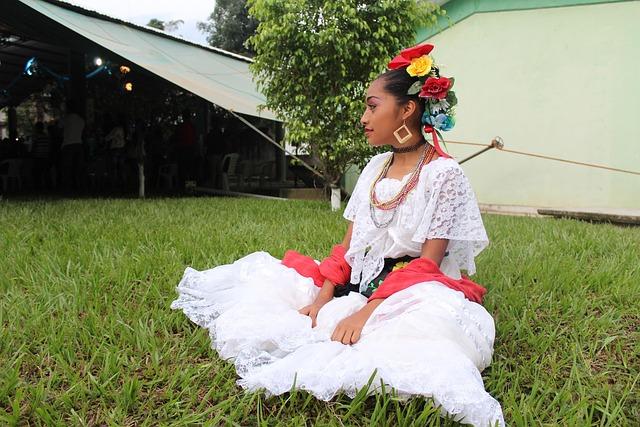Welcome! If you’ve ever been curious about the rich stories, vibrant customs, and timeless wisdom that shape the world’s indigenous communities, you’re in the right place. Exploring indigenous traditions offers more than just a glimpse into the past-it’s a journey into the heart of local cultures that have thrived for generations. From sacred ceremonies to everyday practices, these traditions reveal deep connections to the land, community, and spirit. So, grab a cup of tea, get comfy, and join me as we dive into the colorful tapestry of indigenous life, learning, and celebration together. Let’s discover the beauty and meaning behind these enduring cultural treasures!
Table of Contents
- Embracing the Heart of Indigenous Storytelling and Oral Traditions
- Discovering Traditional Art Forms and Their Cultural Significance
- Tasting Local Flavors: Indigenous Cuisine Worth Trying
- How to Respectfully Experience Indigenous Festivals and Ceremonies
- Insights and Conclusions
Embracing the Heart of Indigenous Storytelling and Oral Traditions
The beauty of indigenous storytelling lies in its immersive ability to connect generations through vibrant narratives that transcend time. Rooted deeply in community values and lived experiences, these oral traditions are not merely tales but powerful vessels of history, spirituality, and identity. Each story is shared with a rhythm and cadence unique to its culture, weaving together lessons, morals, and memories that shape the worldview of the people. Embracing this art form offers us a window into the fundamental ways communities interpret their surroundings and preserve their heritage without a written record.
To truly appreciate the richness of this oral heritage, consider the following essentials that make indigenous storytelling distinctive and enduring:
- Intergenerational Transmission: Stories are passed down from elders to younger members, fostering a living, breathing archive of knowledge.
- Connection to Land and Nature: Narratives often highlight the integral relationship between people and their natural environment, reinforcing stewardship and respect.
- Spiritual and Educational Roles: Beyond entertainment, these stories serve as ethical guides and spiritual teachings that sustain cultural cohesion.
- Performance and Participation: Storytelling is a communal event, involving music, dance, and dialogue, inviting listeners to engage actively rather than passively consume.
Discovering Traditional Art Forms and Their Cultural Significance
Traditional art forms act as living narratives, weaving stories passed down through generations. These creative expressions-ranging from intricate textiles and pottery to vibrant dance and music-reveal the values, beliefs, and histories of local communities. Immersing oneself in these art forms offers a unique glimpse into the soul of a culture. They are not merely decorative but serve as vital mediums for preserving heritage, teaching moral lessons, and fostering community identity.
When exploring these indigenous art forms, you’ll often encounter distinctive elements that make each tradition unique, such as:
- Symbolism: Every motif and pattern often carries deep spiritual or historical significance.
- Techniques: Skilled artisans use time-honored methods, sometimes unchanged for centuries.
- Materials: Sourced locally, materials connect the artwork to the land and environment.
Engaging with these arts encourages a broader appreciation for cultural diversity and inspires respect for the creative wisdom embedded in indigenous knowledge.
Tasting Local Flavors: Indigenous Cuisine Worth Trying
One of the most immersive ways to connect with indigenous cultures is through their unique culinary heritage. Traditional dishes often carry stories of ancestral wisdom, seasonal cycles, and spiritual significance. Imagine savoring smoke-dried meats tenderized over open flames, paired with vibrant wild greens and roots that have been harvested by hand. Each bite bursts with a depth of flavor rooted in generations of sustainable living. Notably, indigenous cuisine is much more than just food-it’s a living archive of natural harmony and intimate knowledge of the land.
Adventurous food lovers will appreciate trying staples such as:
- Corn and seed-based breads crafted from heirloom varieties;
- Berry-infused beverages harvested from wild forests;
- Clay-baked root vegetables that retain earthy, smoky flavors;
- Fresh river fish prepared with native herbs and spices reflecting local biodiversity.
Growth beyond taste, these dishes invite you into a sensory experience that honors tradition and community values, making each meal a celebration of cultural identity and resilience.
How to Respectfully Experience Indigenous Festivals and Ceremonies
When immersing yourself in indigenous celebrations, it’s essential to approach with genuine openness and humility. Start by researching the festival’s background and significance, so you understand the sacredness behind the rituals. Always follow any guidelines provided by community members about participation, photography, or attire. Remember, these events are more than just cultural displays-they are living expressions of identity and spiritual connection.
Respect manifests in small but impactful actions. Consider these tips:
- Ask permission before taking photos or recording; not all moments are meant for public sharing.
- Listen attentively and avoid interrupting ceremonies or conversations.
- Support local artisans by purchasing handmade crafts directly from indigenous vendors.
- Dress modestly and avoid wearing culturally significant symbols unless invited.
- Express gratitude for the opportunity to witness and learn from these rich traditions.
Insights and Conclusions
Thank you for joining me on this journey into the rich and vibrant world of Indigenous traditions. Exploring local cultures opens our eyes to stories, wisdom, and ways of life that have shaped communities for generations. By appreciating and honoring these traditions, we not only deepen our understanding of the past but also help keep these beautiful practices alive for the future. I hope this glimpse into Indigenous heritage has inspired you to continue exploring and celebrating the diverse cultures that make our world so wonderfully unique. Until next time, happy travels and heartfelt connections!


